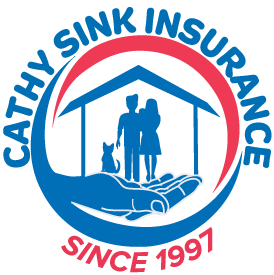In today’s automotive landscape, advancements in technology have not only improved the safety of vehicles but also influenced insurance rates. Car safety features, ranging from basic airbags to sophisticated collision avoidance systems, play a significant role in determining insurance premiums. Among these features, automatic emergency braking (AEB) stands out as a prime example of technology that not only enhances safety but can also lead to potential discounts on insurance premiums.
Let’s understand how car safety features, with a specific focus on AEB, influence insurance rates and why insurers offer discounts for vehicles equipped with such technology.
Understanding Automatic Emergency Braking (AEB):
Automatic emergency braking (AEB) is a safety technology designed to prevent or mitigate collisions by applying the brakes automatically when the system detects an imminent crash. This feature utilizes sensors, such as radar, cameras, or lidar, to monitor the road ahead and detect potential hazards, such as vehicles, pedestrians, or obstacles. Upon detecting an impending collision, the system alerts the driver and, if necessary, applies the brakes to either reduce the severity of the impact or avoid it altogether.
Impact on Safety:
The primary purpose of AEB and similar safety features is to enhance road safety by preventing accidents or minimizing their severity. By providing an additional layer of protection, these technologies help mitigate the human error factor, which is a leading cause of accidents. Studies have shown that vehicles equipped with AEB have significantly lower crash rates compared to those without such systems. The ability of AEB to react faster than a human driver and its capability to apply brakes even in situations where the driver might be distracted or unable to respond contribute to its effectiveness in preventing accidents.
Reduction in Insurance Claims:
From an insurance perspective, fewer accidents translate to reduced claim payouts, which ultimately leads to lower financial risk for insurers. As a result, insurance companies are incentivized to encourage the adoption of safety features like AEB by offering discounts to policyholders who drive vehicles equipped with such technology. The rationale behind this approach is simple: safer vehicles result in fewer claims, which translates to lower costs for insurers and potentially lower premiums for policyholders.
Actuarial Analysis and Risk Assessment:
Insurance companies rely on actuarial analysis to assess risk and determine insurance premiums. Actuaries use statistical models to evaluate various factors, including the make and model of the vehicle, the driver’s age and driving history, geographical location, and most importantly, the presence of safety features. Vehicles equipped with AEB and other advanced safety technologies are deemed to be at lower risk of being involved in accidents, leading to lower premiums for policyholders. Actuarial data consistently demonstrates the effectiveness of AEB in reducing the frequency and severity of collisions, thus justifying the discounts offered by insurers.
Regulatory Mandates and Industry Standards:
In addition to the inherent safety benefits, the adoption of AEB and similar technologies is further propelled by regulatory mandates and industry standards. Governments around the world are increasingly implementing regulations that require automakers to incorporate advanced safety features into new vehicles. For example, organizations such as the National Highway Traffic Safety Administration (NHTSA) in the United States and the European New Car Assessment Programme (Euro NCAP) have been instrumental in promoting the adoption of AEB through safety ratings and guidelines. Compliance with these regulations not only enhances vehicle safety but also contributes to eligibility for insurance discounts.
Consumer Demand and Competitive Advantage:
Beyond regulatory requirements, consumer demand for safer vehicles has also been a driving force behind the widespread adoption of AEB and other safety features. As awareness of the importance of vehicle safety grows among consumers, automakers are increasingly prioritizing the integration of advanced safety technologies into their vehicles. Offering vehicles with AEB and similar features not only meets consumer expectations but also provides automakers with a competitive advantage in the market. Moreover, the availability of insurance discounts for vehicles equipped with AEB serves as an additional incentive for consumers to opt for safer vehicles, further driving demand for these technologies.
Challenges and Limitations:
While AEB and other safety features have demonstrated significant benefits in reducing accidents and insurance claims, there are challenges and limitations that need to be addressed. One such challenge is the cost associated with equipping vehicles with advanced safety technologies, which can increase the overall price of the vehicle. However, as these technologies become more widespread and standardized, the cost is expected to decrease over time, making them more accessible to consumers across various price segments.
Furthermore, the effectiveness of AEB and other safety features may be influenced by factors such as adverse weather conditions, sensor limitations, and system malfunctions. While these technologies are designed to operate under a wide range of conditions, there are instances where their performance may be compromised, leading to false alarms or failure to intervene. Additionally, the reliance on technology may inadvertently lead to complacency among drivers, who may become overly reliant on the system and less attentive to the road.
Car safety features such as automatic emergency braking (AEB) play a crucial role in influencing insurance rates by reducing the frequency and severity of accidents. Insurers offer discounts to policyholders who drive vehicles equipped with AEB and other advanced safety technologies, reflecting the lower risk associated with these vehicles.
By understanding the impact of car safety features on insurance rates, consumers can make informed decisions when purchasing vehicles and selecting insurance coverage, ultimately promoting safer driving practices and reducing the societal costs associated with accidents and injuries on the road. When it comes to auto insurance in Cape Coral, FL, Cathy Sink Agency recognizes the vital role that car safety features play in influencing insurance rates. As a trusted insurance provider, we understand the importance of prioritizing safety on the road.

